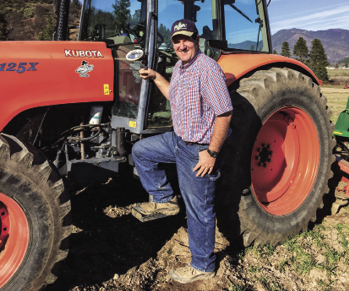From the Fields - Brandon Fawaz

Photo/Courtesy Brandon Fawaz
By Brandon Fawaz, Siskiyou County hay farmer
Winter came late and blessed us with a good snowpack and good rain in our rivers and creeks. Some creeks that had not run in three or four years had water running. There’s still a little snow in the mountains. We were optimistic about that.
We have plenty of water to use this year and in most years, but we face challenges. More petitions are being filed trying to establish minimum flows on the Scott River. These are in excess of what the previous emergency drought regulation required, and they would be unsustainable for Scott Valley agriculture.
Related to hay, it has been a challenging year. Last year, we experienced incredibly high prices. This year, we’re seeing incredibly low prices. The average between the two is below what it should be for us to be sustainable. Demand is consistent with that of previous years, but supply is up drastically. Irrigation districts that haven’t had water in three years delivered water this year, so people planted more because water was available.
There is a surplus of grain hay—wheat or barley hay. In 2021, that hay might have traded for $160 to $180 a ton. In 2022, it maybe went as high as $280 a ton, which was very high. It has fallen to maybe $100 a ton this year. The low price for hay in June, which is when we make 45% of our yearly production in that first cutting, was compounded by input costs. We didn’t see much relief. Fuel and fertilizer are still expensive. Adding to this, we had only nine consecutive days without rain in some locations. I got more hay rained on than I ever have in my life at any one time. All it did was wreck the hay.
The second cutting is going up nicely. We have two days left of baling the second cutting. Next, we start harvesting wheat and barley. We should start the combines next week.




